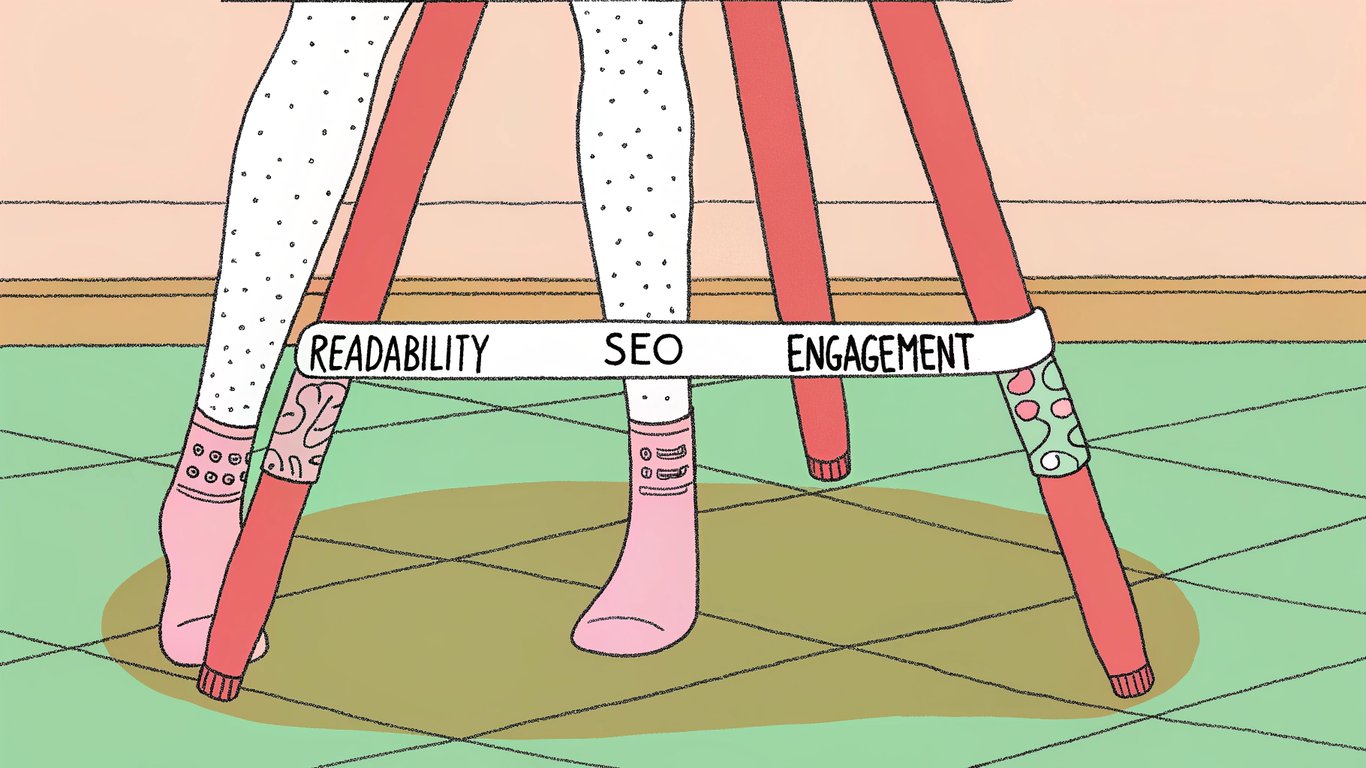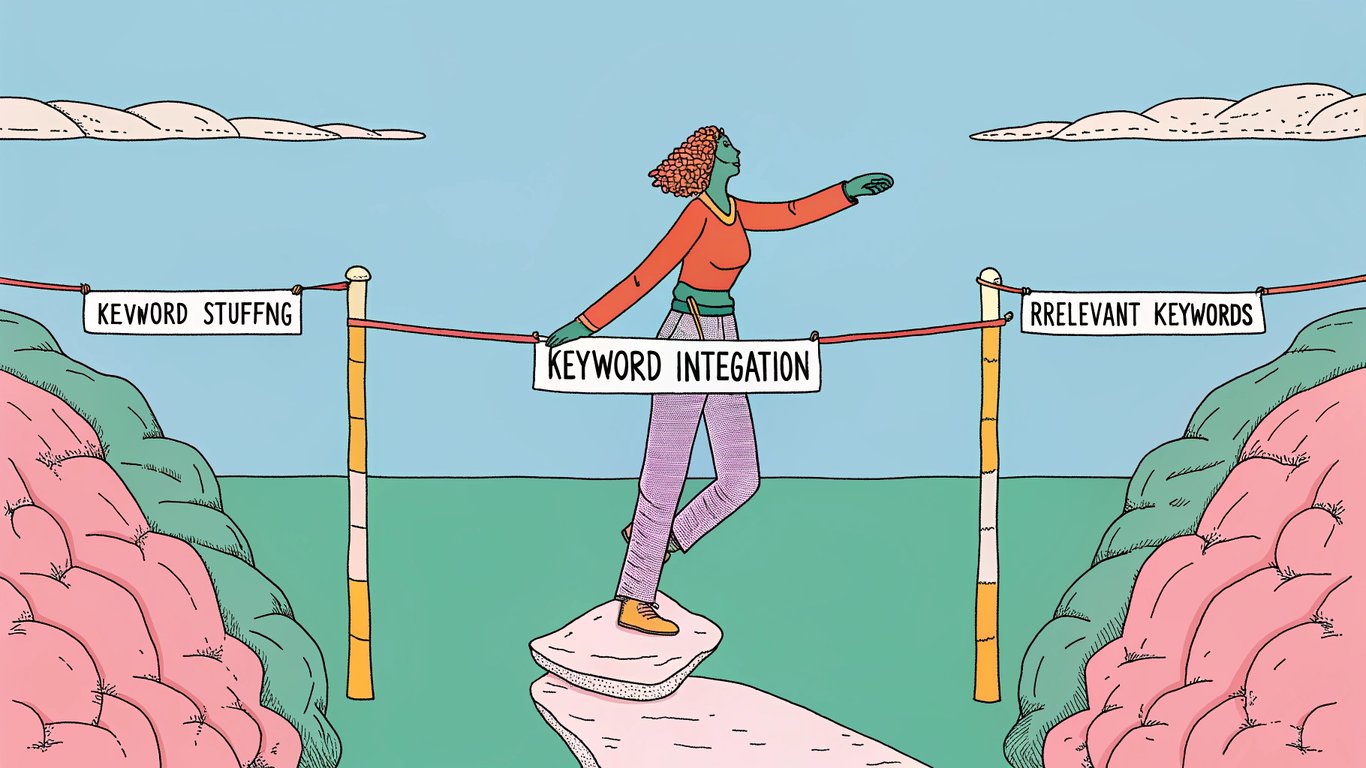AI has fundamentally changed how we create content. What used to take hours of research and writing can now happen in minutes. But here's the catch: AI-generated content often lacks the human touch that readers crave and search engines reward.
The challenge isn't whether to use AI (that ship has sailed), but how to make AI-assisted content feel authentic, rank well, and actually engage your audience. These content writing tips will help you bridge that gap.
Why AI-Assisted Content Needs Special Attention

AI tools like ChatGPT and Claude produce content that's technically correct but often generic. They tend to use similar phrases, follow predictable structures, and miss the nuanced understanding that comes from real experience.
Search engines are getting better at detecting this pattern. Google's algorithms now prioritize content that demonstrates expertise, authoritativeness, and trustworthiness (E-A-T). That means your AI-assisted content needs human refinement to compete.
The Triple Focus: Readability, SEO, and Engagement
These three elements work together like a three-legged stool. Remove one, and the whole thing falls apart. Readable content keeps people on your page. SEO optimization helps them find you in the first place. Engagement signals to search engines that your content is valuable.
The best content writing tips address all three simultaneously. You can't just optimize for keywords and ignore readability, or focus on engagement while neglecting SEO basics.

Readability-Focused Content Writing Tips (Tips 1-5)
Tip 1: Use the Hemingway Principle for AI Content
AI loves complex sentences. It'll give you 30-word monsters that technically make sense but exhaust readers. The Hemingway Editor can help, but you don't need the tool to apply the principle.
Break long sentences into shorter ones. Aim for an average of 15-20 words per sentence. Replace complex words with simpler alternatives when possible. Your readers will thank you.
Tip 2: Master the Art of Scannable Formatting
Most people don't read online content word-for-word. They scan. Your formatting should support this behavior, not fight it.

- Use headers every 200-300 words
- Break up text with bullet points and numbered lists
- Add plenty of white space between paragraphs
- Bold important phrases (but don't overdo it)
- Keep paragraphs to 3-4 sentences maximum
Tip 3: Implement the 'One Idea Per Paragraph' Rule
AI often creates dense paragraphs that cover multiple concepts. This overwhelms readers and hurts comprehension. Each paragraph should focus on one main idea.
Start each paragraph with a clear topic sentence. Everything else in that paragraph should support or expand on that single point. If you find yourself covering multiple ideas, split them into separate paragraphs.
Tip 4: Add Human Voice to AI-Generated Text
AI writes like a textbook. You need to inject personality, opinions, and real experiences. Share specific examples from your work. Use contractions. Express uncertainty when appropriate.
Instead of "Content marketing strategies are effective," try "I've seen content marketing boost traffic by 300% when done right, but it's not magic." The second version feels human.
Tip 5: Use Transition Words as Content Bridges
AI-generated sections often feel disconnected. Smooth transitions help readers follow your logic and keep them engaged. But avoid overused phrases like "furthermore" or "in addition."
Try more natural transitions: "Here's the thing," "But there's a catch," "That said," or "Now, here's where it gets interesting." These feel conversational and maintain flow.
SEO-Optimized Content Writing Tips (Tips 6-10)
Tip 6: Strategic Keyword Integration Without Stuffing
Keywords should feel natural in your content. If you're forcing them in, you're doing it wrong. Focus on semantic variations and related terms rather than repeating the exact phrase.
For "content writing tips," you might also use "writing advice," "content creation strategies," or "editorial techniques." Search engines understand these connections and reward natural language.
Tip 7: Craft Compelling Meta Descriptions and Title Tags
Your title tag should be under 60 characters and include your primary keyword. Meta descriptions should be 150-160 characters and act like ad copy. They need to entice clicks, not just describe content.
Instead of "This article covers content writing tips," try "15 proven content writing tips that boost engagement and rankings in 2025." The second version promises specific value.
Tip 8: Optimize for Featured Snippets and Voice Search
Structure your content to answer specific questions. Use numbered lists, tables, and clear definitions. Voice search queries are often question-based, so include natural question-and-answer formats.
Create sections that directly answer "What is," "How to," and "Why" questions related to your topic. These formats often get pulled into featured snippets.
Tip 9: Build Internal Linking Strategies
Link to other relevant content on your site using descriptive anchor text. This helps search engines understand your content relationships and keeps readers engaged longer. To further optimize your site's structure, explore the best internal link mapping tools.
Don't just link to your homepage or contact page. Connect related articles, guides, and resources that provide additional value to readers exploring your topic.
Tip 10: Focus on E-A-T (Expertise, Authoritativeness, Trustworthiness)
Google's quality guidelines emphasize E-A-T. Include author bios, cite credible sources, and demonstrate real expertise through specific examples and insights.
Share your actual experience, reference industry studies, and link to authoritative sources. This builds trust with both readers and search engines.
Engagement-Boosting Content Writing Tips (Tips 11-15)
Tip 11: Start with Hook-Heavy Introductions
Your first sentence determines whether readers continue or bounce. Skip generic openings like "In today's digital world." Start with a surprising fact, a bold statement, or a relatable problem.
"Most content gets ignored within 15 seconds" is more engaging than "Content marketing is important for businesses." The first creates curiosity; the second states the obvious.
Tip 12: Use Storytelling Elements in Informational Content
Even technical content benefits from narrative elements. Share case studies, customer examples, or your own experiences. Stories make abstract concepts concrete and memorable.
Instead of just explaining a concept, show it in action. Describe the problem, the solution, and the outcome. This approach keeps readers engaged while delivering information.
Tip 13: Include Interactive Elements and CTAs
Engagement isn't just about reading. Include calls-to-action that encourage interaction: "Try this technique on your next post," "Share your results in the comments," or "Download our checklist."
Place CTAs strategically throughout your content, not just at the end. Natural transition points work well: after explaining a concept, before moving to the next section.
Tip 14: Add Visual Content Descriptions and Alt Text
Describe your images, charts, and graphics in the surrounding text. This helps with accessibility and SEO while providing context for readers who might not see the visuals clearly.
Alt text should be descriptive but concise. Instead of "image of graph," use "bar chart showing 40% increase in organic traffic over six months." This provides actual information.
Tip 15: End with Action-Oriented Conclusions
Don't just summarize what you've covered. Give readers specific next steps. What should they do first? What's the most important tip to implement immediately?
Create momentum by connecting your content to action. "Start with tip #2 on your next post" is more valuable than "These tips will help improve your content."
Tools and Resources for Implementing These Content Writing Tips
Essential Writing and Editing Tools for 2025
The right tools can streamline your content creation process and help you implement these content writing tips more effectively.
| Tool | Purpose | Best For |
|---|---|---|
| Grammarly | Grammar and style checking | Catching errors and improving clarity |
| Hemingway Editor | Readability analysis | Simplifying complex sentences |
| Notion | Content planning and organization | Managing editorial calendars |
| Surfer SEO | Content optimization | SEO analysis and keyword integration |
SEO Analysis and Keyword Research Tools
Understanding what your audience searches for is crucial for effective content writing. These tools help you identify opportunities and track performance.
- Ahrefs for comprehensive keyword research and competitor analysis
- Google Search Console for tracking your content's search performance
- Answer The Public for finding question-based keywords
- Google Trends for identifying trending topics and seasonal patterns
Readability and Engagement Measurement Tools
These tools help you measure how well your content writing tips are working and identify areas for improvement.
- Google Analytics for tracking user behavior and engagement metrics
- Hotjar for heatmaps and user session recordings
- Readable for detailed readability scoring
- BuzzSumo for analyzing content performance and social shares
Measuring Success: KPIs for AI-Assisted Content
Readability Metrics That Matter
Track these metrics to ensure your content writing tips are improving readability:
- Average time on page (aim for 2+ minutes for long-form content)
- Bounce rate (lower is generally better)
- Scroll depth (what percentage of users reach the end)
- Flesch-Kincaid reading level (aim for 8th-10th grade)
- Average sentence length (15-20 words is ideal)
SEO Performance Indicators
These metrics show whether your SEO-focused content writing tips are working:
- Organic search traffic growth
- Keyword ranking improvements
- Click-through rates from search results
- Featured snippet captures
- Internal link clicks and page authority
Engagement Analytics to Monitor
These metrics indicate whether readers find your content valuable and engaging:
- Social shares and comments
- Email newsletter signups from content
- Return visitor percentage
- Pages per session
- Conversion rates from content to desired actions
Your 2025 Content Writing Action Plan
Quick Implementation Checklist
Start implementing these content writing tips immediately with this practical checklist:
- Review your last three AI-assisted posts and break up long sentences
- Add more headers and bullet points to improve scannability
- Inject personal experiences and opinions into generic AI content
- Check that each paragraph focuses on one main idea
- Optimize your meta descriptions to be more compelling
- Add internal links to related content on your site
- Include specific CTAs throughout your content
- Set up tracking for key engagement and SEO metrics
Future-Proofing Your Content Strategy
AI and search algorithms will continue evolving, but these fundamental content writing tips remain valuable because they focus on human needs. Readable, helpful, engaging content will always have a place.
The key is balancing AI efficiency with human insight. Use AI to handle research and first drafts, but always add your unique perspective, experience, and voice. That's what separates good content from great content in 2025 and beyond.
Start with the readability tips first. They'll have the biggest immediate impact on your audience. Then layer in the SEO and engagement strategies as you get comfortable with the process. Your readers (and your rankings) will thank you.



